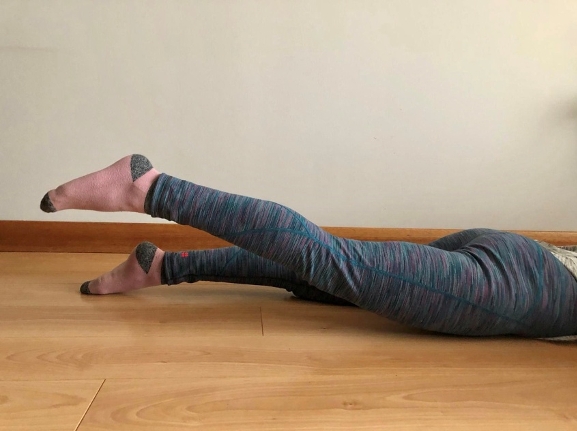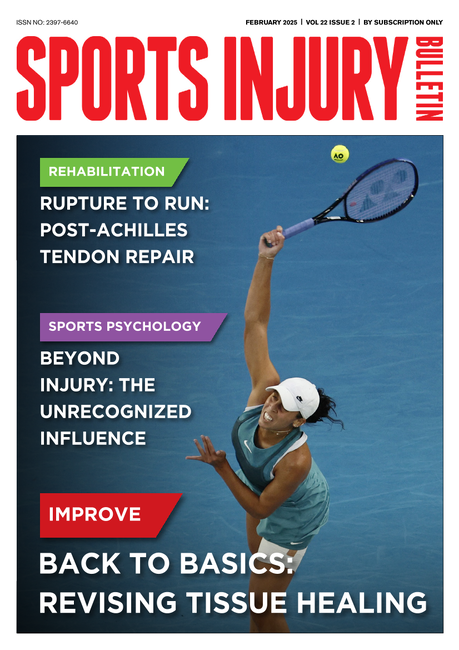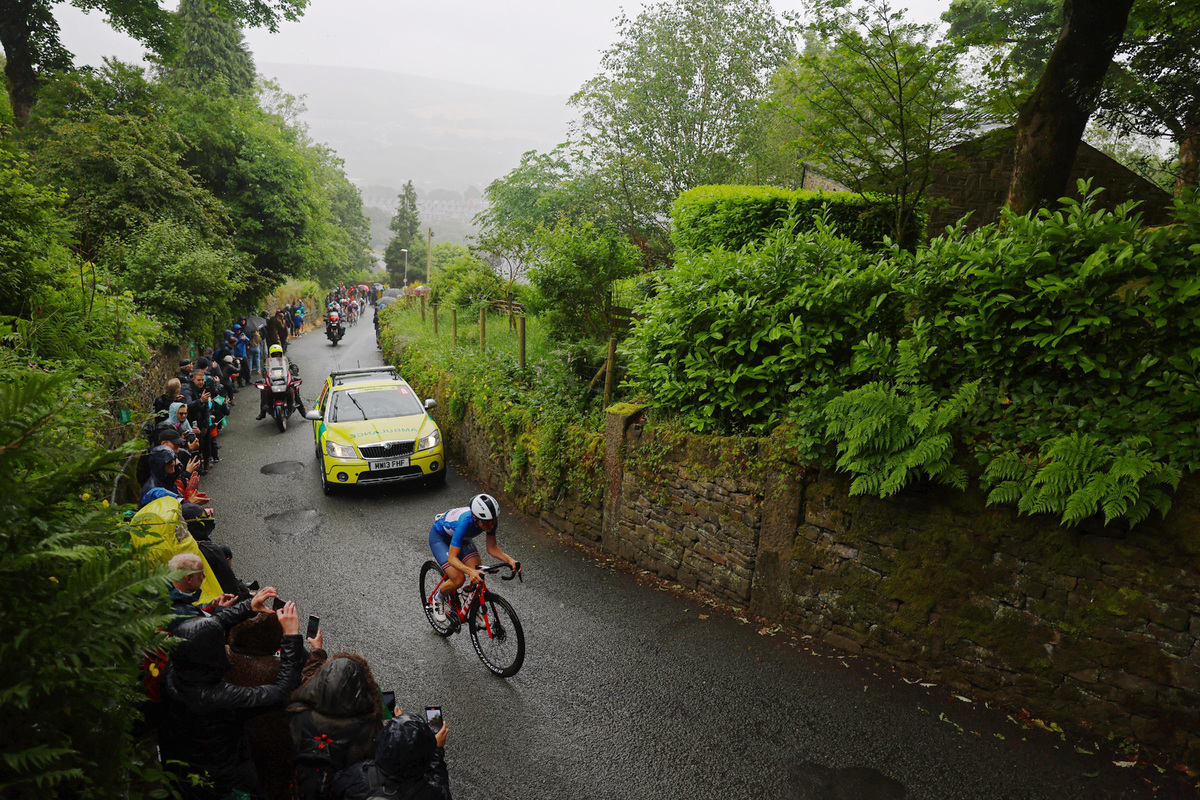You are viewing 1 of your 1 free articles
Hamstring injuries: why location and anatomy matters!

Hamstring injuries are the most common soft tissue injuries seen in team field sports and track. The very high rate of re-injury (as high as one in three) suggests that potential errors in injury management are common(1). These errors could include a premature return to sport, inadequate or unspecific rehabilitation, or, indeed a combination of the above.
Clinicians usually plan hamstring rehabilitation according to the healing phase of the injury - ie the stage of inflammation and tissue repair. An alternative approach treats the damaged muscle based on the mechanism of injury. For example, an injury due to high-speed running and sudden acceleration may dictate a different rehabilitation method than a stretch-related injury that occurs with slow but extreme muscle lengthening(2,3). However, more recent research from British Athletics suggests that to improve rehabilitation outcomes, clinicians should focus on the anatomical location of hamstring injuries(4). They propose that the treatment of injured hamstrings should reflect the varying responses to loading and rates of healing among the involved tissues – fascia, muscle, and tendon. Therefore determining the location of the injury is essential.
While a clinical examination can confirm a hamstring injury, it is difficult to confirm the exact anatomical location of the damage clinically (see figure 1). That said, there are some clinical signs which point to the involved tissue. Complaints of either a sudden or gradual onset of pain in the posterior thigh may signify a myofascial injury. Despite complaints of pain, the athlete usually maintains their range of motion and strength. Those who report a sudden onset of pain after performing high-speed sprints or jumps often suffer an injury at the musculotendinous junction. Impairment of the contractile mechanism at this level produces severe pain, weakness, and limited movement. Intra-tendon injuries occur abruptly from the forceful mechanisms of high-velocity sprinting or stretching. Symptoms include loss of range of motion, power, and antalgic gait.
An MRI, on the other hand, can identify the exact location and extent of the injury and assist with return-to-sport estimations. For example, a damaged tendon will likely take longer to heal than an injured muscle due to the time required for collagen synthesis, remodeling, and restored ability to transmit force safely (5). Knowing the specific location of injury helps clinicians plan appropriately and relay realistic expectations of the rehabilitation timeline to the athlete.
Figure 1: Anatomical representation of hamstring injury location(3)

Principles of hamstring rehabilitation
*SpecificityThe hamstring consists of three separate portions of muscle that share the same origin and act in harmony, but have different individual actions (see figure 2). The biceps femoris is most active during acceleration and terminal swing, where it decelerates the forward movement of the leg upon contact to the ground(4,6). Therefore, it generates the largest forces during sprinting activities. However, it is also vulnerable during intense active lengthening contractions(4,7).
When assessing a hurt hamstring, consider the athlete’s previous injury history as well. Prior damage may offer a clue to the location of the current problem. For example, the presence of scar tissue may result in reduced tissue motion, leading to considerable strain at the MTJ(7). The semitendinosus is subject to the greatest lengthening velocities; and semimembranosus is responsible for force production through swing and stance phases, but has the least ability to lengthen(3,4). Loading progressions should, therefore, specifically address the area injured and the role it plays within the biomechanical mechanism.
*Loading
Begin graded running drills as early as 48-hours following a hamstring injury; evidence suggests no detriment as a result, as well as a reduction in re-injury rates once an athlete has returned to sport(8). Progressive running drills should gradually increase velocity towards sprinting speed, as well as produce active muscle lengthening. This progression provides functional loading and conditioning to the hamstrings, which prepares them for sprinting later on(9).
*Strength & conditioning
Sprinting generates high eccentric forces within the hamstring muscles. Therefore, the injury often occurs when the leg is outstretched just before heel strike. At this point in the gait cycle, the muscles are at their peak length while also maximally contracting to decelerate the body. With this in mind, eccentric rehabilitation exercises increase the optimum muscle length for force generation and mimic the biomechanical action of the hamstrings. They also require less load to generate large forces within the muscle, thus reducing the overall burden on the damaged tissue(10).
More than two-thirds of hamstring injuries occur near the end of play/competition when the athlete is often fatigued. In a tired state, the athlete has less functional strength, produces less eccentric torque, and may not achieve needed muscle length. A fatigued muscle becomes more at risk of injury if it cannot accommodate the load and transfer of energy(11).
A fatigued hamstring, therefore, is more susceptible to injury. Loading the hamstrings under fatigue during rehab is a sensible method to adapt the muscle for these situations. Isometric exercises may be useful in developing fatigue resistance. Isometric contractions may also generate a ‘spring-like’ tensile response in the tendon, while the contractile elements work under a reduced load(4). Instruct the athlete to perform these strength training exercises after participating in running drills to develop fatigue resistance.
Tissue-specific rehabilitation
1) FasciaInjury to the fascial tissue feels more painful initially due to its rich neurovascular innervations. However, these same factors promote speedy healing. Inflammation and edema trigger the repair process, and research suggests half of maximal strength returns within seven days and full strength by three weeks(4). As the muscle-tendon structures are intact, progress rehabilitation quickly with running drills and a typical strength training program. There is little need to be cautious or to isolate hamstring conditioning specifically with these more superficial injuries. Rehabilitation should focus more on improving lower-limb biomechanics such as hip flexion angle, trunk control, leg coordination, use of the arms in rotation during running, and foot contact with the ground(4).
2) Musculotendinous junction
These injuries result in immediate debilitation due to damage to the contractile portion of the muscle which reduces its force-generating capacity. Stretching is also extremely painful. Rehabilitation should commence with gentle low-load, low-volume exercises with reduced range such as isometrics, squats, or step-ups(4). Exercise progression should next aim to increase fatigue resistance by increasing load while decreasing volume, emphasize eccentric loading through hip-dominant exercises, and advance to knee-dominant eccentric exercises. Introduce running drills be when walking is pain-free, and pain levels scores are less than 3/10 with minimal stretch on the hamstrings.
3) Intra-tendon
Tendon healing takes longer than the other tissues due to the complex collagen synthesis, remodeling, and maturation that must occur to restore the tendon to its tensile strength. Clinically, partial intra-tendon injuries may appear to resolve quickly if the contractile element of the musculotendinous unit remains intact(4). Understanding the physiological timescale required to heal, commence rehab initially with isometrics. Delay eccentric exercises for around three weeks post-injury to avoid premature loading. When introduced, load the muscle at least with 80% of a one-repetition max and continue to progress the load for at least 12 weeks, even if symptoms resolve(4).
| Fascia | Musculotendinous Junction | Intra-tendon | |
|---|---|---|---|
| Healing facts | Fast recovery.Minimal impact on range of movement & strength.Inflammation & edema main factors. | Early recovery 10 days post-injury. Regeneration within ~ 3 weeks. | Apparent fast recovery for low-level loading. Caution for high-level loading for subsequent 4-6 months. |
| Running progressions | Early. | When walking is pain-free. Keep pain levels <3/10. | From week 1 post-injury, but slower progression over 9 week period. |
| Strength training progressions | Non-specific to hamstrings. Follow previous strength program. | High-volume, low-load, and progress towards low-volume, high-load. Combine eccentric, isometric, exercises while in a fatigued state. | Begin with isometrics. No eccentric work until 3 weeks post-injury. Continue for more than 12 weeks. |
| Estimated return to sport | Approx. 3 weeks. | Longer delay. Full eccentric strength required. | 6 weeks to 6 months, depending on time taken to generate adequate load. |
Sample rehabilitation exercises
Early-stage, low load exercises:- Squats
- Step-ups
- Hamstring curls (isometric or concentric)
- Glute bridges (see figure 2)
Figure 2: Glute bridges

Note: Perform with the foot elevated on a bench for a greater challenge.
Hip-dominant eccentric exercises:
- Romanian deadlifts (bilateral or single leg – see figure 3)
- Prone hip extension (see figure 4)
Figure 3: Romanian deadlifts

Note: Progress by adding weight and performing as a single-leg exercise.
Figure 4: Prone hip extension exercise

Knee-dominant eccentric exercises:
- Nordic hamstring curls
Summary of key points
- Hamstring injuries comprise a large number of soft-tissue sports injuries, as well as having a significant re-injury rate.
- Hamstring injury diagnosis should be classified by anatomical location for a more specific rehabilitation prescription, as different tissues differ in their healing rates and their response to loading.
- Determine as an injury to the fascia, musculotendinous junction, or intra-tendon.
- Follow standard principles of hamstring rehabilitation, including running-load management, strength training, and fatigue resistance conditioning.
References
- Br J Sports Med. 2016; 50:619-630.
- Am J Sports Med. 2007. 35(2):197-206.
- Am J Sports Med. 2007. 35(10): 1716-1724.
- Br J Sports Med. 2019. 53:1464-1473.
- J Hand Surg Am. 2008. 33:102-112.
- Med Sci Sports Exerc. 2001. 33:783-790.
- J Biomech. 2010. 26;43(12):2254-2260.
- A J Sports Med. 2006. 34(8): 1297-1306.
- Sports Med. 2013. 43:1207-1215.
- Med Sci Sports Ex. 2004. 36:756-759.
- Am J Sports Med. 1996. 24:137-143
Newsletter Sign Up
Subscriber Testimonials
Dr. Alexandra Fandetti-Robin, Back & Body Chiropractic
Elspeth Cowell MSCh DpodM SRCh HCPC reg
William Hunter, Nuffield Health
Newsletter Sign Up
Coaches Testimonials
Dr. Alexandra Fandetti-Robin, Back & Body Chiropractic
Elspeth Cowell MSCh DpodM SRCh HCPC reg
William Hunter, Nuffield Health
Be at the leading edge of sports injury management
Our international team of qualified experts (see above) spend hours poring over scores of technical journals and medical papers that even the most interested professionals don't have time to read.
For 17 years, we've helped hard-working physiotherapists and sports professionals like you, overwhelmed by the vast amount of new research, bring science to their treatment. Sports Injury Bulletin is the ideal resource for practitioners too busy to cull through all the monthly journals to find meaningful and applicable studies.
*includes 3 coaching manuals
Get Inspired
All the latest techniques and approaches
Sports Injury Bulletin brings together a worldwide panel of experts – including physiotherapists, doctors, researchers and sports scientists. Together we deliver everything you need to help your clients avoid – or recover as quickly as possible from – injuries.
We strip away the scientific jargon and deliver you easy-to-follow training exercises, nutrition tips, psychological strategies and recovery programmes and exercises in plain English.










